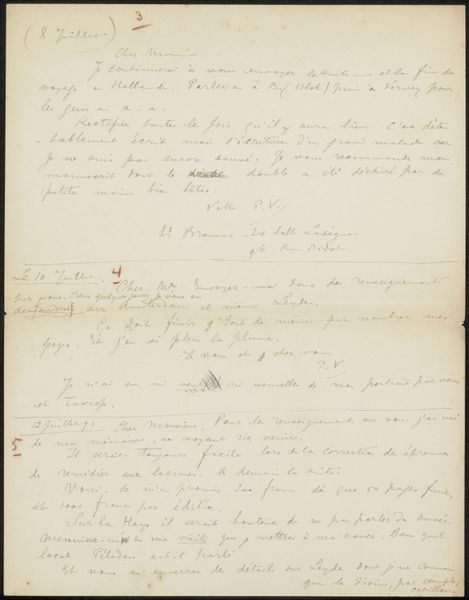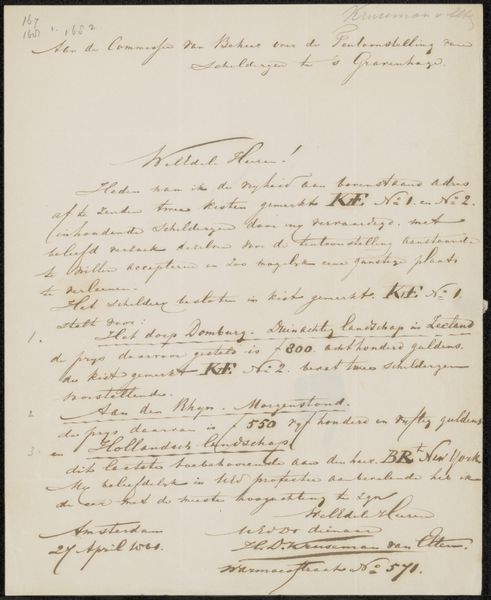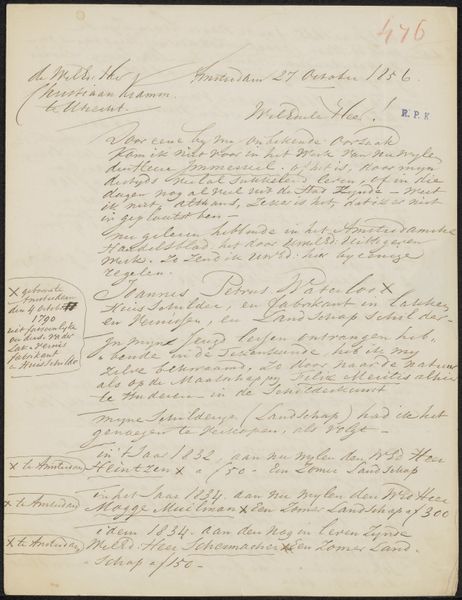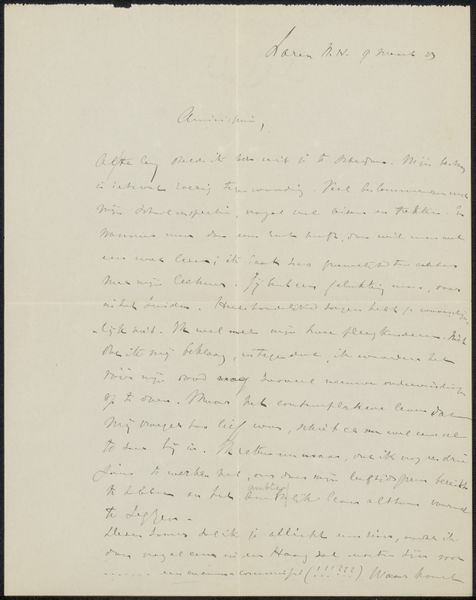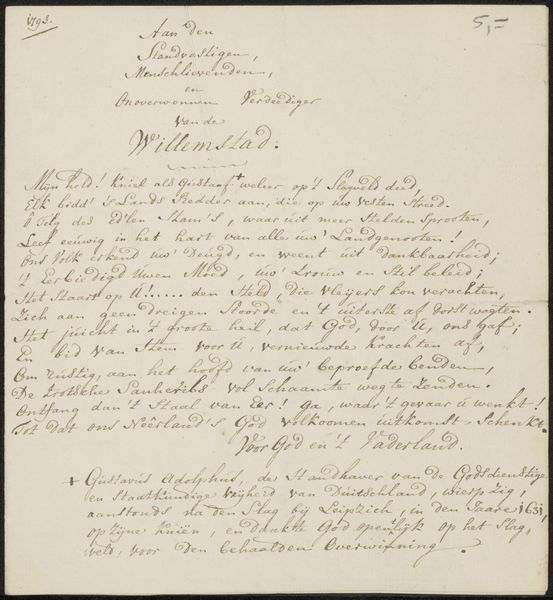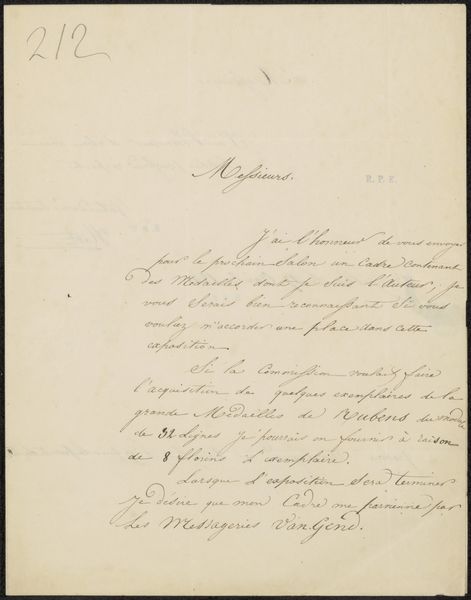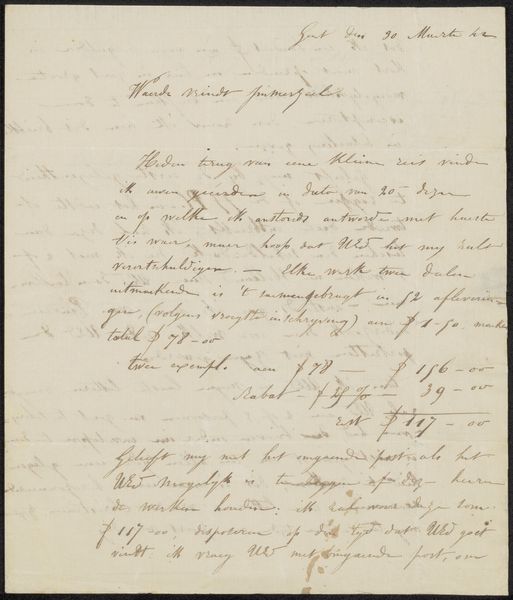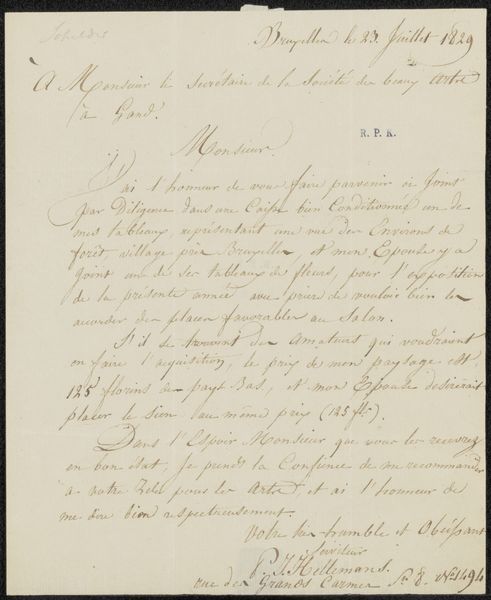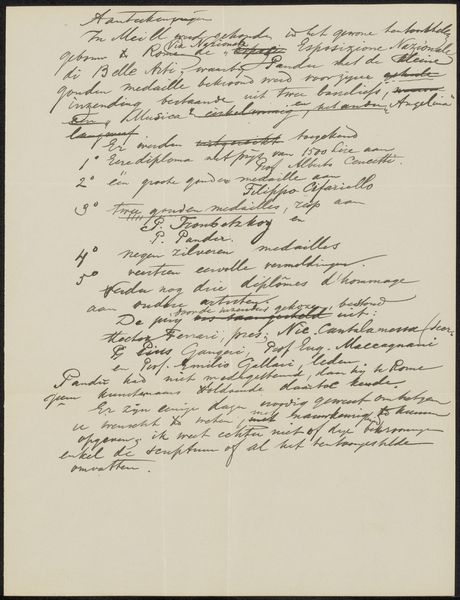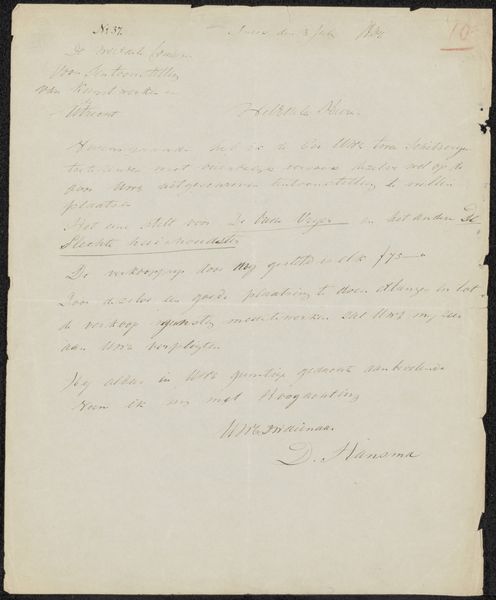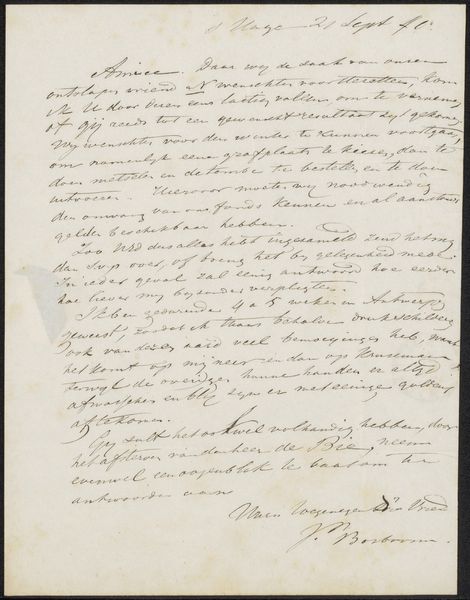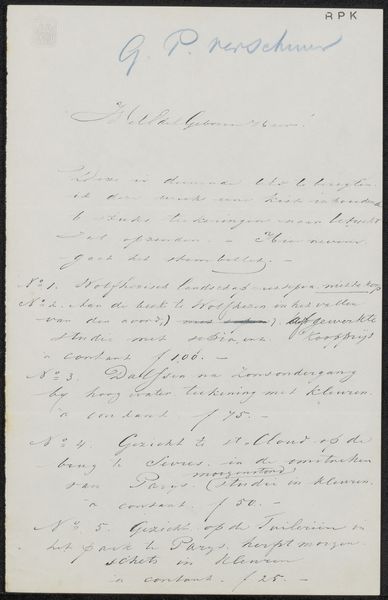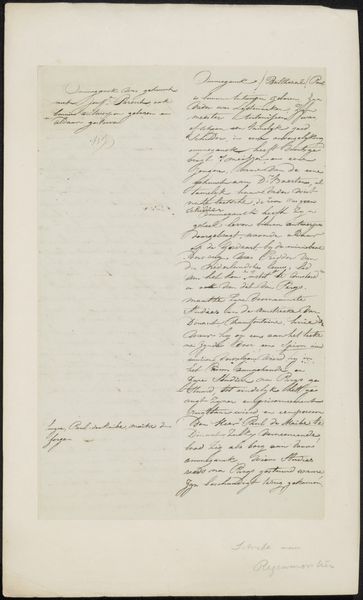
drawing, paper, ink, architecture
#
drawing
#
paper
#
ink
#
architecture
Copyright: Rijks Museum: Open Domain
Curator: Here, we see Louis Roelandt's "Brief aan Christiaan Kramm," possibly from 1861, created with ink on paper. The script itself, penned with such care, evokes a particular era and certain set of aesthetic values. What strikes you most about this piece? Editor: Well, the script, of course! It's very intricate and tight. It feels very private, even though it’s presented as an artwork. What was the function of script during this period? Why elevate something that is clearly a piece of personal correspondence? Curator: That's an insightful observation. Script, especially calligraphy, held considerable cultural weight during the 19th century. Beyond pure communication, handwriting represented one’s education, social standing, and personal character. The visual qualities of the writing - the flourishes, the pressure of the pen - these weren't merely functional. Do you notice any patterns or recurring elements? Editor: I see repeating loops and flourishes. Is this particular handwriting style connected with his work? Curator: Exactly. In architecture, just like in handwriting, line, form, and composition convey meaning. The repeated forms could mirror the architectural principles of the time, perhaps a reverence for symmetry or classical orders. The overall aesthetic reflects a desire to communicate not just information, but also artistry and refined sensibilities. This letter becomes an artifact of cultural memory, doesn't it? Editor: That’s amazing! The idea that something as simple as handwriting can tell us so much about a person and a period is mind-blowing. Curator: Indeed. Roelandt uses the written word to create an almost devotional piece, a reflection of a time. Thank you, Editor, for sharing the vision.
Comments
No comments
Be the first to comment and join the conversation on the ultimate creative platform.
